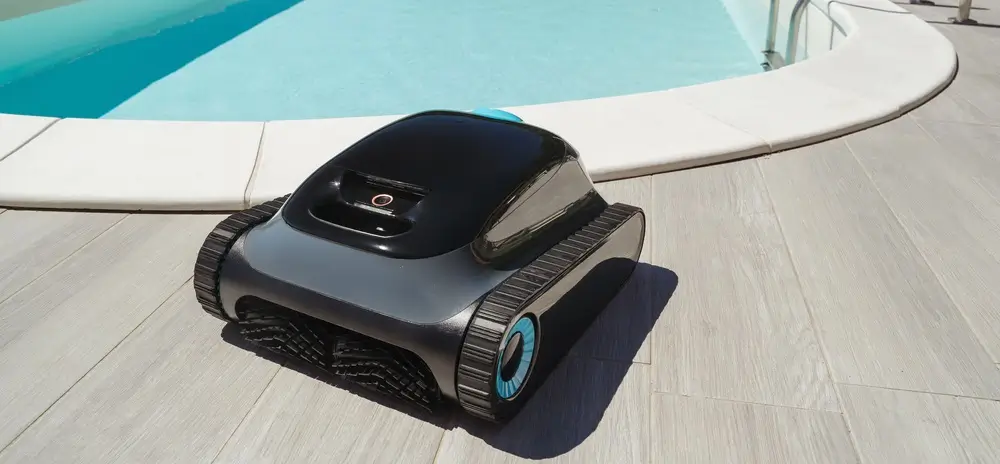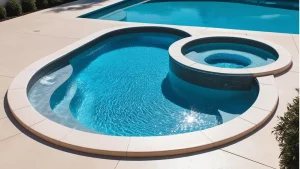Many people prefer vinyl-lined pools to enjoy a relaxing time at home. The maintenance of having it sparkling clean, however, needs some proper tools to ensure. For pool owners, a vinyl pool vacuum automatic is a must-have. These devices are designed to be used specifically for vinyl pools, ensuring effective cleaning without damaging the delicate liner. This is the guide breaking down everything you want to know about vinyl pool vacuums, starting with its benefits and all the way to the best options of 2025.
What is a Vinyl Pool Vacuum Automatic?
It’s an automatic device intended for cleaning your pool without much supervision, which doesn’t require hand operation. That is in stark contrast with the conventional or what might be referred to as “manual pool vacuums”, which rely on being worked by human intervention through hand operations.
Why is it Different from Other Pool Vacuums?
Vinyl pool vacuums are specifically engineered for delicate vinyl liners. Standard pool vacuums can sometimes scratch, tear, or wear out vinyl surfaces. Automatic vinyl vacuums are equipped with soft wheels and gentle brushes, ensuring a deep clean without compromising the liner’s integrity.
Benefits of Using a Vinyl Pool Vacuum Automatic
If you’re on the fence about purchasing a vinyl pool vacuum automatic, consider the following advantages:
Saves Time
This process will take hours if the pool is large or located in a wooded area where trees shed leaves and debris. An automatic vacuum works independently so you can focus on other activities or enjoy your free time.
Extends the Lifespan of Your Pool Liner
Vinyl liners tend to deteriorate if not handled carefully. Automatic vacuums are gentle and specifically designed not to cause damage to your liner, thus keeping it looking good for years.
Reduced Chemical Use
A clean pool requires fewer chemicals. An automatic vacuum removes dirt, algae, and debris regularly, thus ensuring better water circulation and a reduced need for excessive chemical treatments.
Thorough Cleaning Performance
Many automatic vacuums can clean areas that are hard to reach manually, such as pool corners, walls, and even steps. Robotic models, in particular, offer advanced navigation to ensure no spot is missed.
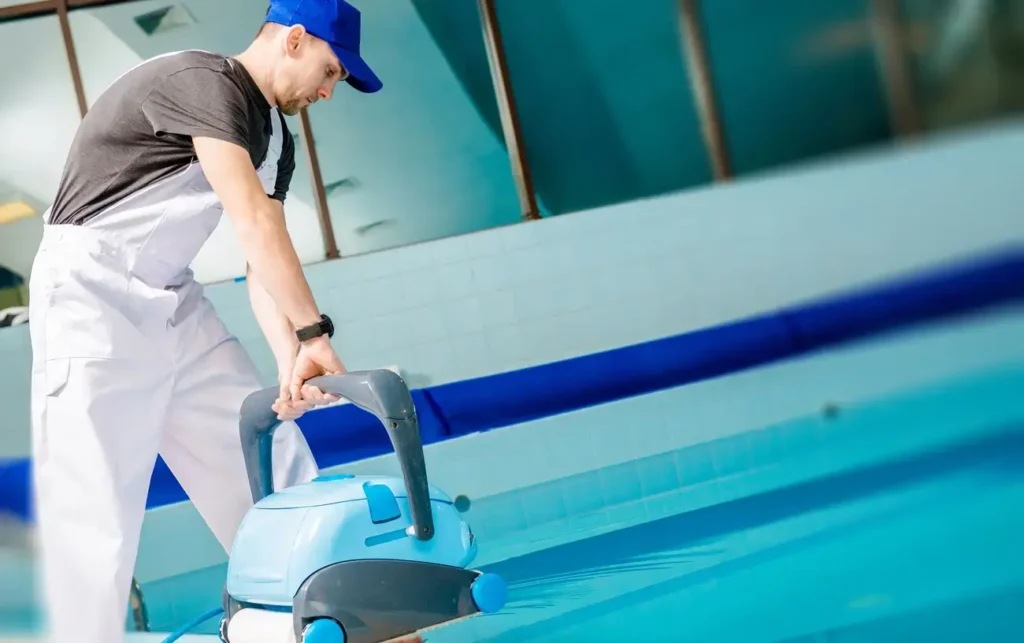
How Does a Vinyl Pool Vacuum Automatic Work?
Understanding the mechanism of automatic vacuums will help you choose the right one for your pool.
Basic Functionality
Depending on the model, these vacuums feature a connection to the filtration system of the pool or can use self-sufficient functioning. These are dragged along the surfaces of the pool floor and on pool walls to suck in dirt and debris that is deposited into a bag, or canister using the filter system of your pool.
Main Components
- Vacuum Head: Contacts the pool’s surface to remove debris.
- Hoses: Used in suction and pressure-side models to connect to the pool system.
- Motor and Navigation Systems: Found in robotic models for independent operation.
Suction vs. Pressure Systems
- Suction-Side Models: Use the suction created by your pool pump to clean the pool.
- Pressure-Side Models: Rely on water pressure from the return jets to move and collect debris.
Types of Vinyl Pool Vacuum Automatic Systems
There are fundamentally three main types of automatic pool cleaners; they have their advantages and disadvantages depending on your needs and the configuration of your swimming pool itself.
Suction-Side Automatic Vacuums
These connect to the suction line of your pool pump and operate from the suction generated as water runs through the filtration system. It is affordable and efficient but may require a pool pump that is robust enough to work well.
- Best For: Small to medium-sized pools.
- Drawbacks: This can put extra strain on your pool pump, and may struggle with larger debris.
Pressure-Side Automatic Vacuums
Powered through water strain from the pool’s go-back jets, these vacuums gather debris in an onboard bag as opposed to counting on the pool filter out. They’re wonderful for selecting up big debris like leaves.
- Best For: Medium to big pools with heavy debris.
- Drawbacks: It may require a booster pump for optimal performance.
Robotic Automatic Vacuums
The most advanced option, robotic vacuums, operate independently of your pool’s filtration system. They use built-in motors for movement and suction, and many come with features like programmable cleaning cycles and smart navigation.
- Best For: Pool owners looking for convenience and top-notch performance.
- Drawbacks: Higher upfront cost compared to other models.
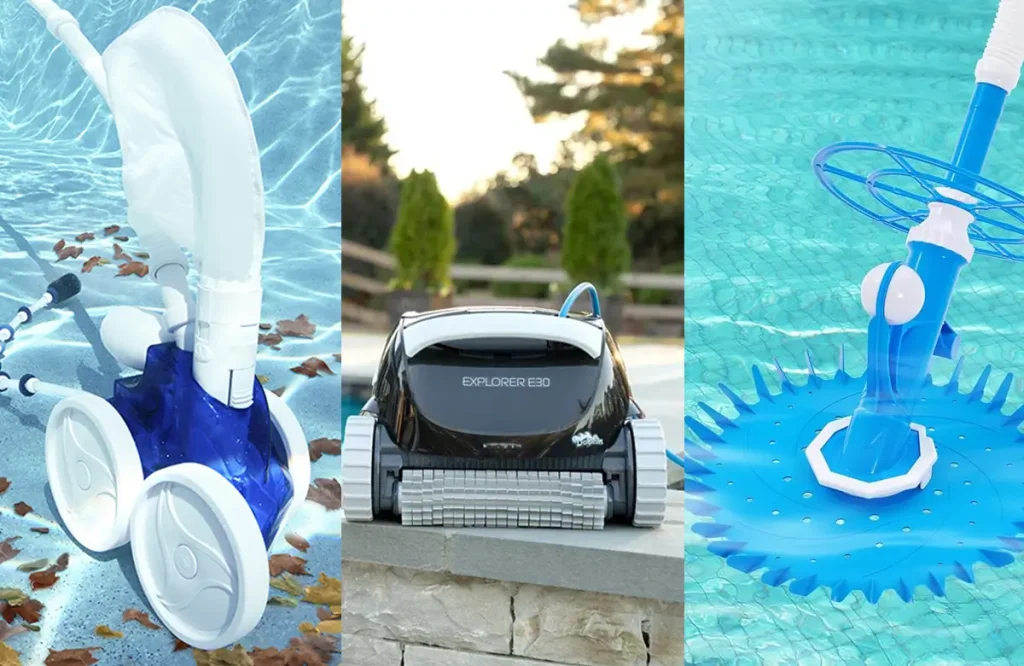
Top Features to Look for in a Vinyl Pool Vacuum Automatic
When looking for an automatic vacuum, prioritize the following capabilities to make sure it’s the right healthy in your pool:
- Soft Brushes and Wheels:
These prevent scratches and tears on the vinyl liner, keeping it in excellent condition. - Adjustable Suction Settings:
Adjustable suction allows you to clean effectively without pulling too hard on the liner, especially in areas with tight corners or delicate edges. - Advanced Navigation:
Robotic models with advanced navigation systems can clean more efficiently by avoiding obstacles and covering the entire pool. - Ease of Maintenance:
Opt for a vacuum with easily replaceable parts, simple cleaning mechanisms, and clear instructions for maintenance. - Pool Size Compatibility:
Ensure that the vacuum you settle for is appropriate for the pool size and shape. Larger pools may require longer hoses or more powerful models.
Top 3 Vinyl Pool Vacuum Automatic Models in 2025
Picking the right vacuum cleaner can be confusing. Here are three plans waiting for 2025.
Dolphin Nautilus CC Plus
- Type: Robotic.
- Best Features: Energy-efficient, programmable cleaning cycles and superior debris collection.
- Ideal For: Large vinyl pools with minimal user effort.
Hayward PoolVac XL
- Type: Suction-Side.
- Best Features: Gentle on vinyl liners, reliable suction power, and affordability.
- Ideal For: Small to medium-sized pools.
Polaris 360
- Type: Pressure-Side.
- Best Features: It doesn’t require a booster pump, excellent for leaves and large debris.
- Ideal For: Pools in leafy areas.
How to Install a Vinyl Pool Vacuum Automatic
Installation of an automated vacuum is a system that could appear overwhelming, however maximum models are clean to install.
Here’s the way you cross about it:
Installation Steps for Suction and Pressure-Side Vacuums
- Assemble the Vacuum: Attach the hoses, vacuum head, and debris bag if necessary.
- Connect to Pool System: Attach the hoses to the designated suction or pressure ports.
- Test the Vacuum: Place the vacuum in the pool and run a test to ensure it’s moving and suctioning correctly.
Installation for Robotic Vacuums
- Plug in the Vacuum: Connect the robotic vacuum to its power source.
- Place in Pool: Submerge the vacuum in the pool and let it calibrate.
- Set Cleaning Program: Use the control panel or mobile app to select your desired cleaning mode.
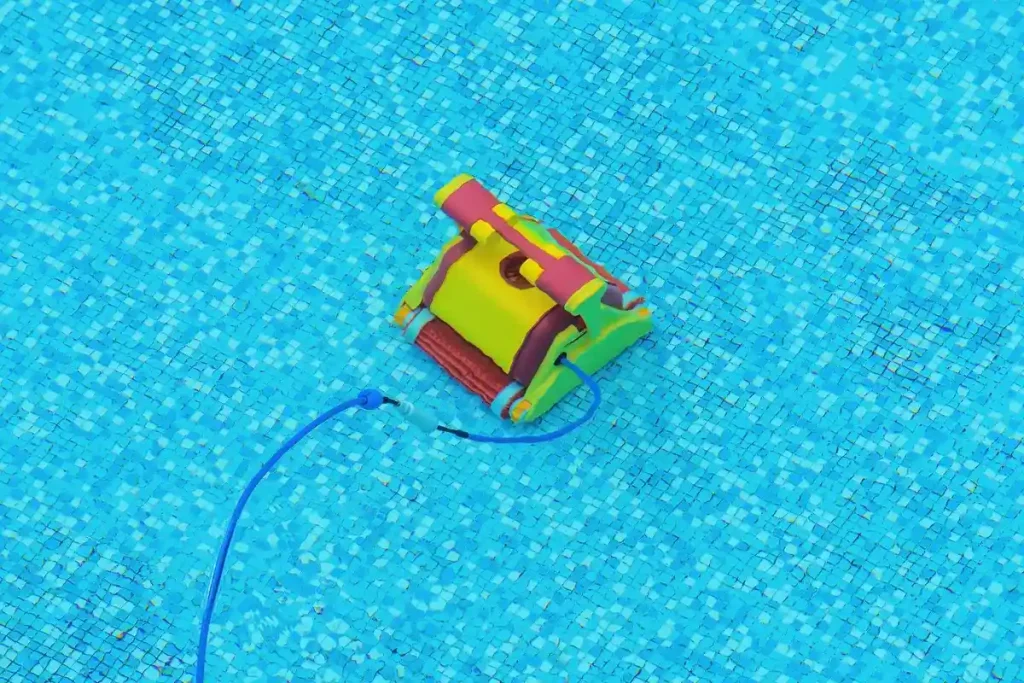
Maintenance Tips for Vinyl Pool Vacuum Automatics
To ensure your vacuum lasts for years and performs well, follow these maintenance tips:
- Clean Filters and Bags Regularly:
Empty debris bags or clean the vacuum filter after every use to maintain strong suction power. - Inspect Moving Parts:
Check for wear on brushes, wheels, or belts. Replace damaged parts promptly to avoid further issues. - Store Properly:
Store the vacuum in a dry, shaded area when not in use to avoid material degradation.
Conclusion
This pool vacuum automatic is an absolute must-have for keeping your pool clean, beautiful, and safe to use. Whatever your preference is between affordable suction-side models, high-capacity debris-handling from pressure-side vacuums, or just for a convenient robotic cleaner, you will find an option among those that suit every pool owner. With the right investment in the model and regular maintenance, you will see sparkling water and a vinyl liner that lasts for a lifetime.
Can any vacuum be used on my vinyl pool?
No. Only use vacuums rated for vinyl pools to keep them undamaged.
How regularly should I clean my vinyl pool with an automatic?
Run the vacuum regularly – once or twice a week. If the pool sees heavy use or has sustained a storm, it probably should be cleaned more frequently.
Is a robotic vacuum worth the extra cost?
Yes, robotic vacuums offer superior cleaning, convenience, and energy efficiency, making them a good investment for many pool owners.
How can I avoid my vacuum damaging the liner?
Look for a model with soft brushes and wheels, and ensure that the suction setting is suitable for vinyl surfaces.
How long does an automatic vacuum last?
If properly maintained, most automatic vacuums last between 5 to 8 years.

